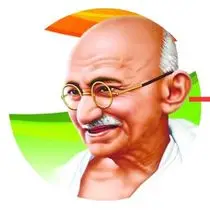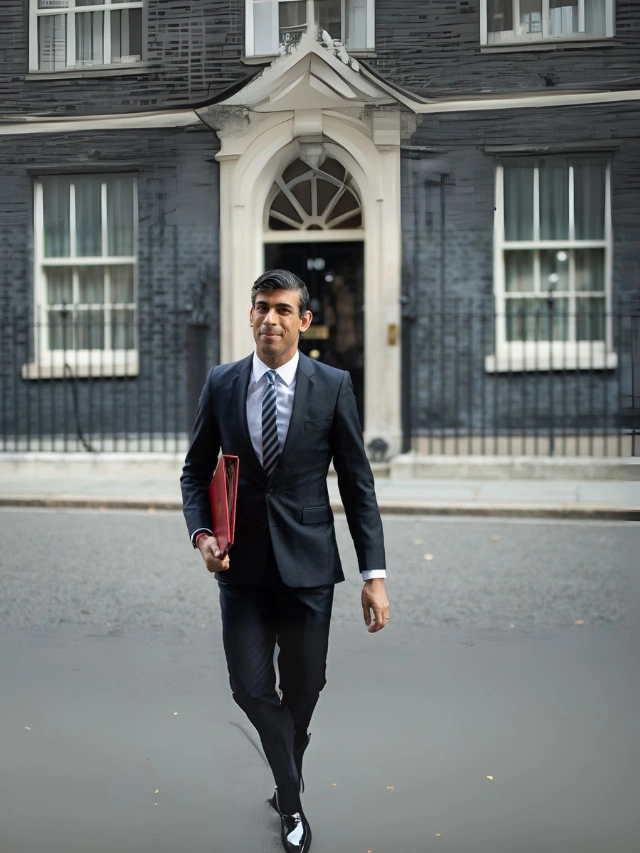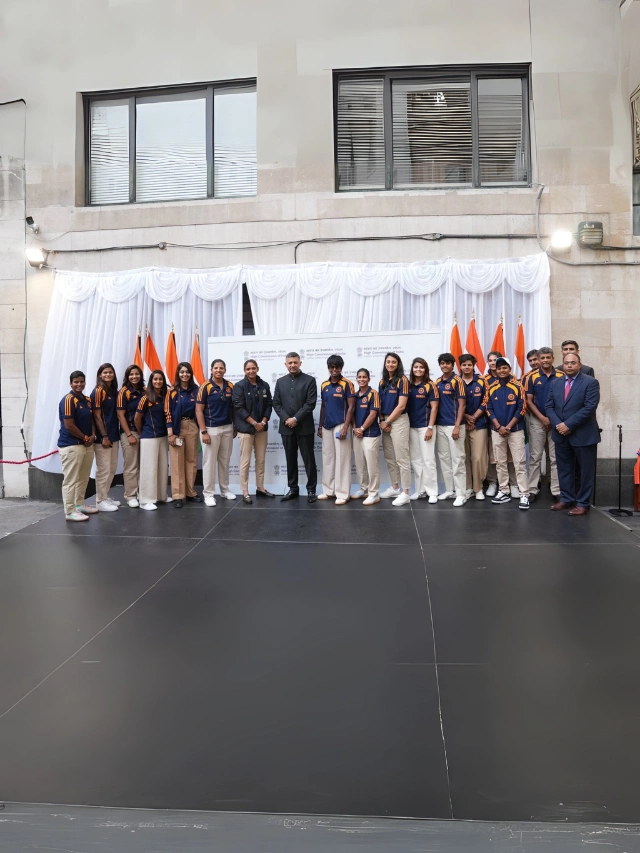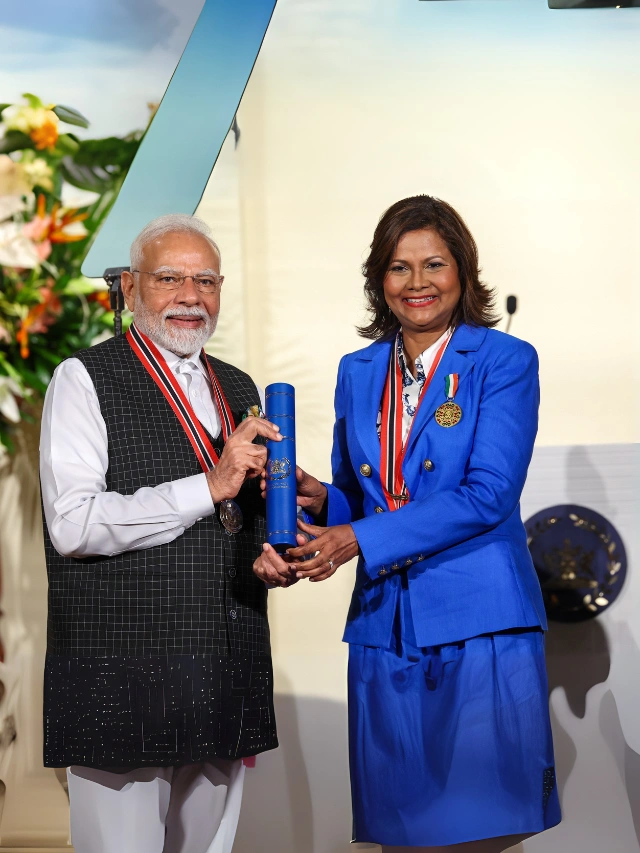Mahatma Gandhi
A shy lawyer evolved into a powerful freedom fighter who shaped India’s destiny. Mahatma Gandhi was born on October 2, 1869, in Porbandar, India. He lived 78 remarkable years until his assassination on January 30, 1948, in Delhi. His life experience brought changes that would reshape history forever.
Gandhi completed his legal education at London’s Inner Temple when he was 22. He then spent 21 years in South Africa where his philosophy of nonviolent resistance emerged. The year 1906 proved crucial as he developed Satyagraha to fight discriminatory laws against Indians. This approach became the foundation for his fight against injustice worldwide.
CEO’s | Actors | Politicians | Sports Stars
The Jallianwala Bagh massacre of 1919 pushed Gandhi to strengthen his steadfast dedication to Indian independence. His boldest act of civil disobedience happened in 1930 with the Dandi Salt March. He led his supporters across 400 kilometers to protest British salt laws. This powerful demonstration earned him international acclaim and Time magazine’s Man of the Year title.
Civil rights movements worldwide learned from Gandhi’s philosophy of nonviolent resistance. Martin Luther King Jr. and Nelson Mandela drew inspiration from his methods. He faced several imprisonments, including a six-year sentence for sedition in 1922. Yet his belief in peaceful protest remained unshaken. His birthday lives on as Gandhi Jayanti in India and the International Day of Nonviolence globally.

From Porbandar to London: The Early Life of Mohandas Gandhi
Birthplace and family background
Humble beginnings: Mohandas Karamchand Gandhi was born on October 2, 1869, in a small white-washed house in Porbandar, a coastal town on the Kathiawar Peninsula in western India. Ships from distant lands had docked for centuries in this sea-port, which sat beneath the distant Barda Hills. Mohandas, the youngest of six children born to Karamchand Gandhi and Putlibai, came from a family known for its public service.
Family legacy: The Gandhi family earned respect as capable administrators across generations. His grandfather, Uttamchand Gandhi, started as a modest merchant and rose to become the Dewan (Chief Minister) of Porbandar. His son Karamchand Gandhi followed suit, becoming Dewan of Porbandar in 1847 at age 25 and serving for 28 years. Despite lacking formal education, Karamchand’s knowledge and real-life experience made him a respected administrator known for his capability, bravery, and generosity. All the same, he had one notable flaw – a quick temper.
Maternal influence: Gandhi’s mother Putlibai belonged to a Pranami Vaishnava family from Junagadh. She became Karamchand’s fourth wife after his previous marriages ended with his wives’ early deaths or remained childless. Putlibai, born in 1844, brought four children into the world – Laxmidas, Raliatbehn, Karsandas, and finally Mohandas in 1869.
Influence of his mother and early religious values
Spiritual foundation: Gandhi’s family’s diverse religious background substantially shaped his worldview. His Gujarati Hindu Modh Bania family exposed him to various spiritual traditions. His mother’s Pranami tradition left a lasting impact as it embraced teachings from multiple religious texts, which encouraged an inclusive spiritual outlook.
Mother’s devotion: Putlibai lived an extraordinarily pious and disciplined religious life. Gandhi later wrote that she “would not think of taking her meals without her daily prayers” and “would take the hardest vows and keep them without flinching”. She spent her time between household duties and the temple, often fasting. She also nursed sick family members tirelessly.
Moral teachings: Putlibai’s influence on Gandhi’s commitment to truth shines through a memorable incident. Young Gandhi once mimicked a cuckoo’s song to end his mother’s fast (she had vowed not to eat until hearing the bird). Her distress at his deception touched him deeply. “What sin have I committed that I gave birth to a son who speaks untruth?” she cried. This moment moved Gandhi to vow never to lie again. His household’s Vaishnavism and Jain influences taught him core principles: ahimsa (noninjury to all living beings), vegetarianism, fasting for self-purification, and respect for different faiths.
Marriage and early education
School days: Gandhi started his education in Porbandar, where students wrote the alphabet in dust with their fingers. His family moved to Rajkot when he turned seven, where his father became Dewan. Gandhi’s school performance was modest – neither outstanding nor poor. His teachers noted: “good at English, fair in Arithmetic and weak in Geography; conduct very good, bad handwriting”.
Childhood character: Family and friends called young Mohandas “Moniya”. He preferred being alone and took long walks when not helping his mother or caring for his ailing father. But his quiet nature came with strong moral values, as seen when he befriended Uka, an “untouchable” sweeper-boy, despite social rules against it.
Early marriage: Traditional customs led to Gandhi’s marriage at 13 to 14-year-old Kasturbai Makhanji. The 1883 ceremony included his brother’s and cousin’s weddings too. Gandhi later remembered: “As we didn’t know much about marriage, for us it meant only wearing new clothes, eating sweets and playing with relatives”. Their relationship grew deeper over time, and they welcomed their first surviving child, Harilal, in July 1888.
Journey to London and legal studies
Academic transition: Gandhi enrolled at Samaldas College in Bhavnagar State in January 1888, the region’s only degree-granting institution. The switch from Gujarati to English challenged him. His family discussed his future – Gandhi wanted to study medicine, but law ran in the family.
Momentous decision: A family friend, Mavji Dave Joshiji, suggested studying law in London. This idea excited Gandhi, who saw England as “a land of philosophers and poets, the very center of civilization”. The plan faced hurdles: money problems, his mother’s worries about foreign temptations, and community leaders’ opposition.
Preparation and promises: Gandhi promised his mother to avoid meat, alcohol, and women while in England. His brother helped with money for the trip. The Modh Bania subcaste leaders threatened excommunication, calling overseas travel against Hindu religion. Gandhi stood firm in his decision.
London life: Gandhi left Bombay for London on the steamer Clyde on September 4, 1888, turning 19 at sea. He joined the Inner Temple on November 6, 1888, paying £140-1s-5d. His early days in British culture led to amusing attempts at becoming an “English gentleman” – he bought fashionable clothes, including a “chimney pot hat” and tried dancing and violin lessons. He stayed true to his vegetarian values despite challenges and found vegetarian restaurants in London. The London Vegetarian Society, which he joined in September 1890, connected him with thinkers who broadened his perspective.
Awakening in South Africa: The Birth of a Revolutionary
Facing racial discrimination
Transformative encounter: Mohandas Karamchand Gandhi landed in South Africa on May 24, 1893. He came to handle a legal matter for Dada Abdullah Jhaveri, a merchant from Porbandar. His life took a dramatic turn on June 7, 1893. Guards threw him out of a first-class train compartment at Pietermaritzburg station despite his valid ticket. The whole ordeal left him alone in the waiting hall of the empty station that night.
Systemic oppression: South Africa’s treatment of Indians raised serious concerns. Most Indians worked as indentured laborers in harsh conditions on sugar plantations or as merchants under heavy restrictions. They lived in cramped, unsanitary “Indian locations”. To make things worse, Indians couldn’t vote, walk on footpaths, or step outside after 9 p.m. without permits. Gandhi faced discrimination again in 1904. A policeman near President Kruger’s house shoved him off the pavement and kicked him into the street.
Founding the Natal Indian Congress
Organizational beginnings: These experiences drove Gandhi to rally the Indian community in Durban. He proposed creating an organization to fight discrimination on May 22, 1894. The Natal Indian Congress (NIC) came to life on August 22, 1894. Abdoola Hajee Adam Jhaveri became its first president and Gandhi served as honorary secretary. The NIC emerged as South Africa’s first permanent political organization dedicated to protecting Indian rights.
Strategic approach: Gandhi united the diverse Indian community through this political platform. The NIC’s early focus stayed on protecting Indian merchants’ economic and political interests through petitions and protests outside parliament. Gandhi bombarded the government, legislature, and press with detailed accounts of Indian grievances. The NIC attracted about three hundred Hindus, Muslims, Parsees, and Christians within a month. The £3 yearly fee meant mostly traders could join.
First experiments with satyagraha
Philosophical foundation: The Transvaal Legislative Assembly proposed the Draft Asiatic Law Amendment Ordinance in 1906. People called it the “Black Act.” It would force every Indian – man, woman, and child from age eight – to register their finger and thumb prints. Gandhi saw this as “abominable” treatment that painted Indians as criminals. This sparked his philosophy of satyagraha. He blended two Sanskrit words: satya (truth/justice) and agraha (firmness/force) to create a new path of nonviolent resistance.
Mass resistance: The Black Act passed in March 1907. Gandhi urged Indians to reject compliance and accept jail time. Indians stood guard at documentation offices. Miners stopped work. Crowds traveled illegally from Natal to Transvaal in protest. Authorities arrested Gandhi in January 1908 and gave him two months in prison. Other satyagrahis soon followed. The Transvaal campaigns of 1907-10 saw about 3,000 Indians, including cautious merchants, follow Gandhi’s lead by welcoming arrest and jail time.
Tolstoy Farm and spiritual development
Communal experiment: Gandhi’s Tolstoy Farm took shape near Johannesburg in 1910. He created it to prepare satyagrahis for nonviolent resistance. His friend Herman Kallenbach owned this 1,100-acre community that housed 85 residents living by strict rules. Life stayed simple – residents got salt only on Sundays and could take trains to town just for official work. They walked the 35-kilometer stretch to Johannesburg for everything else.
Spiritual laboratory: A community of Trappist monks near Durban had caught Gandhi’s eye before Tolstoy Farm. He praised their settlement as “a quiet little model village owned on the truest republican principles”. Tolstoy Farm became his testing ground for various principles. He explored diet, nature cure, living in harmony with nature, and brahmacharya (celibacy). Residents grew most of their food and learned practical skills. This community living experiment laid the groundwork for Gandhi’s future work in India, where he connected personal growth with the fight for rights.
Return to India: Gandhi’s Rise as a National Leader
Champaran and Kheda movements
Powerful first campaign: Mahatma Gandhi returned to India in 1915 and made Sabarmati Ashram near Ahmedabad his base for future struggles. His first major victory came in 1917 when he stood up for indigo farmers in Champaran, Bihar who suffered under exploitative contracts with British planters. His peaceful resistance and detailed evidence gathering compelled authorities to form a committee that ended up abolishing the exploitative system.
Rural solidarity: Gandhi’s success in Champaran led him to help farmers in Kheda, Gujarat who faced heavy taxation despite failed crops. His strategic leadership strengthened the peasants who withheld tax payments without fear. This campaign showed how he could turn local grievances into powerful resistance movements that caught nationwide attention.
Non-cooperation and Salt March
Mass mobilization: The Jallianwala Bagh massacre in 1919 prompted Gandhi to launch the Non-cooperation Movement in 1920. He called for boycotts of British institutions, goods, and services. Gandhi emerged as India’s preeminent leader who united millions across social and religious divides for independence.
Symbolic resistance: The Salt March of 1930 demonstrated Gandhi’s political genius. The British salt monopoly affected all Indians whatever their status. Gandhi turned it into a powerful symbol of colonial exploitation. His 240-mile march to Dandi, where he collected natural salt from the seashore, sparked nationwide civil disobedience and grabbed global attention.
Quit India Movement and imprisonment
Final push: World War II intensified and Gandhi launched the Quit India Movement in August 1942 with his famous “Do or Die” call. This bold demand for immediate British withdrawal showed his most aggressive stance, though he stayed committed to nonviolence.
Personal sacrifice: Gandhi spent nearly six years in various prisons throughout his political career. The British authorities held him from 1942 to 1944 after the Quit India resolution – his longest imprisonment. During this time, he fasted for 21 days.
Relationship with Nehru and Congress
Mentorship dynamic: Jawaharlal Nehru became Gandhi’s political heir despite their different views. Gandhi emphasized rural self-sufficiency while Nehru preferred industrialization. Their relationship faced occasional strain but remained crucial to India’s independence movement and post-colonial leadership.
Party transformation: Gandhi reshaped the Congress Party from an elite discussion forum into a mass movement. His revolutionary leadership approach made the party more democratic. He introduced Hindi as its official language and turned the focus toward rural issues. This created India’s first truly national political organization.
Beliefs That Shaped a Nation: Gandhi’s Core Principles
Ahimsa (nonviolence)
Fundamental doctrine: Mahatma Gandhi’s philosophy centered on ahimsa – a nonviolence that surpassed mere physical restraint and covered thoughts and words. Gandhi’s ahimsa stood apart from passive resistance. It embodied active love and a readiness to suffer rather than cause others pain. “Nonviolence is not a garment to be put on and off at will,” he insisted. He saw it as humanity’s natural state rather than a tactical approach.
Satyagraha (truth-force)
Revolutionary concept: Gandhi created satyagraha as a practical method to apply nonviolence in mass political action. This “truth-force” involved peaceful non-cooperation with unjust laws while accepting consequences. “Satyagraha is a weapon of the strong,” Gandhi emphasized. His approach differed from conventional resistance through its spiritual dimension and steadfast dedication to truth. His campaigns in South Africa and India showed that determined nonviolent resistance could challenge powerful opponents effectively.
Swaraj (self-rule)
Complete freedom: Gandhiji’s concept of swaraj reached beyond political independence to include self-control and spiritual liberation. “Real swaraj will come not by the acquisition of authority by a few but by the acquisition of capacity by all,” he wrote. This multifaceted idea required Indians to bridge internal divisions and build economic self-sufficiency alongside political sovereignty.
Simple living and khadi movement
Economic revolution: Gandhi’s spinning wheel symbolized his vision for India’s economic transformation. He championed khadi (handspun cloth) as more than fabric – it represented an economic philosophy of decentralized production that strengthened villages against industrial exploitation. “The spinning wheel represents the hope of the masses,” Gandhi declared. He proved his dedication by wearing only khadi and keeping his possessions to essential items.
Views on caste and untouchability
Social reformation: Gandhi fiercely opposed untouchability and called it “a crime against God and humanity.” His stance challenged orthodox interpretations while respecting Hinduism’s core teachings. His work for Harijans (“children of God”) opened temples to all castes. He personally cleaned latrines to break down notions of impurity. Gandhi believed India’s true independence remained impossible while social inequalities persisted.
The Final Years: Partition, Peace Efforts, and Assassination
The Trip Completed
A shy lawyer turned revolutionary leader, Mahatma Gandhi’s story stands as one of history’s most remarkable personal transformations. His 78-year life led him to develop a philosophy that challenged colonial rule and changed how humans deal with conflicts. His time in South Africa, particularly the whole ordeal at Pietermaritzburg station, sparked his revolutionary spirit. These early years shaped his views on resistance and justice that would reshape India’s history.
A Legacy of Nonviolence
Gandhi’s principles of ahimsa and satyagraha appeal to people worldwide even decades after his death. Leaders of civil rights movements have used his peaceful resistance methods to fight injustice in their societies. Martin Luther King Jr. and Nelson Mandela openly credited Gandhi’s revolutionary approach. His effect reaches way beyond India’s borders. This proves that nonviolent resistance remains a powerful tool against oppression in any time or place.
Beyond Independence
Gandhi’s vision for India went beyond political freedom. He dreamed of swaraj that included spiritual freedom and self-sufficiency along with political independence. He wanted to create a truly just society through village economies, simple living, and social equality rather than just replace foreign rulers with native ones. India’s growth after independence hasn’t always matched his vision. Yet his ideals remain a moral compass that makes Indians think about true freedom in the face of ongoing inequality.
The Man Behind the Mahatma
Gandhi stayed true to his principles in his personal life despite his worldwide fame. His simple lifestyle, vegetarianism, and commitment to truth showed his belief that personal change must come before social change. People often saw him as a saint-like figure. Yet Gandhi was a practical activist who understood human weaknesses while believing in people’s ability to grow. His greatest achievement might be showing that regular people could do extraordinary things through moral courage and nonviolent action.
Eternal Inspiration
Gandhi’s death on January 30, 1948, ended his physical presence but not his spiritual influence. His birthday, celebrated as Gandhi Jayanti in India and International Day of Nonviolence worldwide, reminds us yearly of what he gave to humanity. Our world still faces violence and injustice. Gandhi’s methods give us a powerful alternative to endless cycles of revenge and hate. His message stays relevant: peaceful resistance based on truth and love can overcome huge obstacles and change societies from within.
Read a similar story of Dadabhai Naoroji, father of the Indian independence movement.
FAQ
When did Mahatma Gandhi die?
Mahatma Gandhi was assassinated on January 30, 1948, in Delhi, India. He was shot by Nathuram Godse, a Hindu nationalist, during a prayer meeting. Gandhi’s death was mourned worldwide, marking the loss of a leader who championed non-violence and civil rights.
What is the history of Mahatma Gandhi?
Mohandas Karamchand Gandhi, known as Mahatma Gandhi, was born on October 2, 1869, in Porbandar, Gujarat, India. He studied law in London and later worked in South Africa, where he developed his philosophy of Satyagraha (truth and non-violence). Returning to India, Gandhi led various movements for India’s independence from British rule, including the Non-Cooperation Movement, the Salt March, and the Quit India Movement. His unwavering commitment to non-violence and civil disobedience inspired global leaders and civil rights movements worldwide.
When and where was Mahatma Gandhi born?
Mahatma Gandhi was born on October 2, 1869, in Porbandar, a coastal town in the present-day state of Gujarat, India.
What was the name of Mahatma Gandhi's father?
Mahatma Gandhi’s father was Karamchand Uttamchand Gandhi. He served as the Diwan (chief minister) of Porbandar.
What are some famous quotes by Mahatma Gandhi?
Mahatma Gandhi is renowned for his profound sayings. Here are a few notable quotes:
- “Be the change that you wish to see in the world.”
- “Live as if you were to die tomorrow. Learn as if you were to live forever.”
- “The weak can never forgive. Forgiveness is the attribute of the strong.”
- “An eye for an eye will only make the whole world blind.”
- “Happiness is when what you think, what you say, and what you do are in harmony.”
What was Mahatma Gandhi's full name?
Mahatma Gandhi’s full name was Mohandas Karamchand Gandhi. The honorific title “Mahatma,” meaning “great-souled,” was bestowed upon him in recognition of his profound impact and moral leadership.
What was the name of Mahatma Gandhi's wife?
Mahatma Gandhi was married to Kasturba Gandhi. They were married in 1883 when both were 13 years old. Kasturba was a steadfast supporter of Gandhi’s endeavors and played a significant role in India’s struggle for independence.
What was the name of Mahatma Gandhi's mother?
Mahatma Gandhi’s mother was Putlibai Gandhi. She was known for her devout religious practices and had a profound influence on Gandhi’s spiritual and moral development.
Who assassinated Mahatma Gandhi?
Mahatma Gandhi was assassinated by Nathuram Godse, a Hindu nationalist, on January 30, 1948. Godse opposed Gandhi’s efforts toward Hindu-Muslim unity and his stance during the partition of India.
What was Mahatma Gandhi's religion?
Mahatma Gandhi was born into a Hindu family and practiced Vaishnavism, a tradition devoted to the worship of Lord Vishnu. His mother, Putlibai, was a devout practitioner, and her religious devotion deeply influenced Gandhi’s spiritual outlook. Throughout his life, Gandhi was also influenced by other religions, including Jainism, Christianity, and Islam, advocating for interfaith harmony and understanding.





